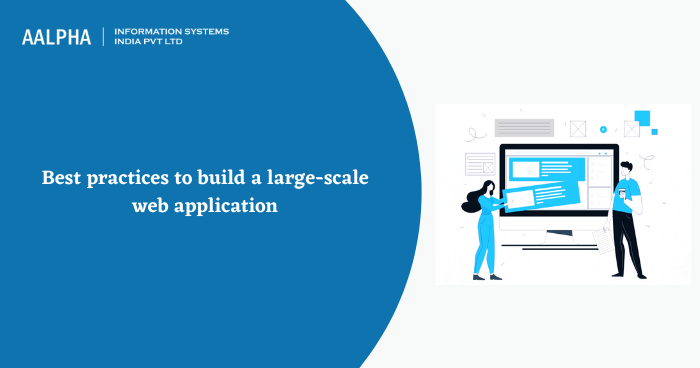

You need to adapt to the new technologies, tools, and framework that improves every day and you have to evolve with time. A solid foundation is required to stay strong in the game. Scalability will help you with performances as to how many people will use the application simultaneously. Large scale web app can handle traffic and quickly accept the changes. There are some aspects which are important to know.
Large-scale voluminous transactions per second cannot be managed if performance is not improved. Traffic driven of million users and requests can be controlled when the performance level is high.
● Page load time should be reduced for assets and javascript. Content Delivery Network(CDN) can be used and will be a help.
● Caching overtime can take a lot of time. You need to use some caching solution so you don’t need to re-render the page every time.
● Client-side rendering where there are complex UX designs can be used for single-page web applications.
Dealing with data every second is the task as there will be different types of databases such as:
● Customer behavior tracking from which you can learn customers patterns and trends. Which type of audience to target will be clear.
● Products displayed online should provide detailed information and images and videos should be part of the product database which will gain customers’ confidence.
● Page view data is vital as it helps to know which page is viewed the most and the least and what changes can you make.
The database should be strong to capture all data provided by the customers in one go.
Availability confirms that you are working 24/7. Customers’ experience at any time and on any date is important. Understanding the effects of downtime and frequent causes happening can be improved so it doesn’t harm the availability of the website.
Availability is measured by percentage. Dividing up time by total time you want and you get the percentage. The uptime should be higher. There are a few factors that do impact uptime.
● Unplanned factors such as power cuts or natural disasters like floods or fire this time the website working chances are less. Server provider does have provisions for these you need to ask them beforehand and take care of it in such situations.
● Maintenance of the website should be planned as new products keep launching or brands keep changing their policies, logos, or color schemes. Changes in the environment or layout need attention and can’t be left undone. Well maintained is always appreciated.
Distributed applications should be near the servers in different geographical locations so the customers shouldn’t face any problems. Distribution is the key to communication as it communicates with different networks on computers to keep everything connected. There is two separate software like back end software and front end software.
The front-end software is what the client sees and interacts with. The back-end software is what the user doesn’t see as it’s hidden. It is mainly for servers, applications, mathematical operations, storing data, data processing, and much more.
Architecture is the base of any web application, especially its a must for larger applications. Architecture depends on frameworks, integrations, languages, topology, API.
● The framework is designed in a way to support the web services, web resources. The main aim is to support the web development of the app. Linux, MySQL, and Apache help to build pre-defined infrastructure.
● Integration is to help other applications to work together, they are designed in such a manner. Connecting a programmer’s functionality to another to make it work.
● The languages used to code an application are many. Java, javascript, python are the three which are trending now. Companies keep in mind their requirements and then code the app, it may be multilingual also.
● Topology is the layout of computer networks. Physical topology is the placement of the cables at different locations. Logical topology is the flow of maps of data.
● Application Programming Interface (API) is for the developers to allow them to create complex functions more easily. No complex code is to be used.
A scalable app working 24/7 has a stable workflow even in times of festivals or heavy discounts or offers. The customer experience increases and also app traffic and transactions. From day one if the app can take millions of users at a point in time, then shortly you don’t need to remake its user count.
The Scalability in apps helps to connect worldwide easily as servers are present in different nations to increase customer productivity on the globe. Scalability can handle the growth in the volume of users or any major changes in the apps. Scalability strategy testing has to be done to check on how it works somewhere on the other the app depends on it.
If your business requires a large-scale web application, then testing all these aspects is crucial. For example: If the company launches a new product then traffic gets diverted there, but what if the app can’t take so much load and crashes, it will be embarrassing. When developing the app keep all the aspects in mind and develop according to the needs of the business.
Are you wishing to build a large-scale web application for your Business? Feel free to Contact Us!

Mar 11, 2024

Mar 6, 2024

Jan 4, 2024

© 2017 All rights reserved.